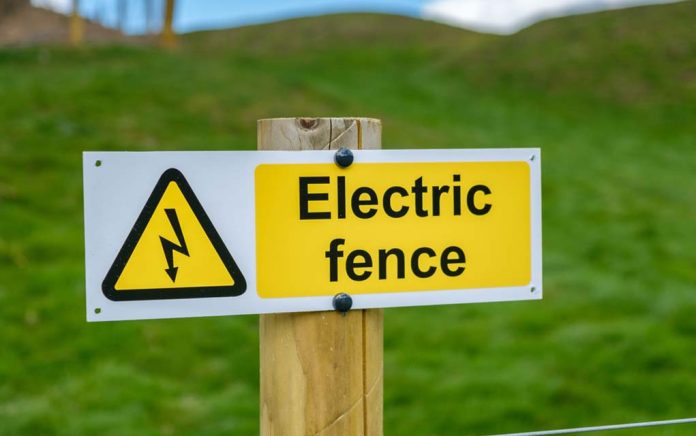(SurvivalDaily.com) – Fences serve as a barrier for animals in three distinct ways. They can serve as physical, psychological, and pain-induced blocks. Physical barriers include wooden fences. Cattle guards serve as psychological barriers by convincing animals they can’t cross them. Barbed wire fences and electrical fences represent pain barriers.
The following video discusses five electric fence hacks for frugal homesteads.
There are three different kinds of electric fences which include temporary, semi-permanent, and permanent. We’re going to focus on showing you how to set up a permanent fence since it can serve as both a physical and pain barrier.
Installing a Permanent Electric Fence
- The first thing you need to do is measure the area for your fence. For smaller areas you can use a tape measure. However, you’ll probably find it easier to count paces, use a land wheel, or an online tool for longer fences that cover large areas.
- Next, you need to set the posts. To make the corner posts, you’ll want to make an H-brace composed of two posts set deep in the ground and a third held between them horizontally forming an “H” shape. Then, you’ll need to set line posts. The spacing can be wider than a normal fence because the wire is lighter than other typical fencing materials.
- Now, you’ll need to string the wire. The hot wire or powered wire should be about nose height for the animal you’re attempting to keep in or out of the area being fenced. If your posts don’t have notched inserts or holes, you can use spring clips to install the wire. To finish up this step you just need to tighten the wire using either a fence stretcher or come along tool.
- Then, it’s time for the power supply. You can purchase either plug-in or solar energizers to power your fence. Plug-in energizers don’t work well with temporary or semi-permanent fences. Solar energizers work just about anywhere. However, they are more expensive than plug-ins and can lose power during extended times of overcast.
- Finally, it’s time to set the ground. It’s best to have at least three ground rods spaced at least six feet apart. Each one will need to be connected to the ground terminal in the power supply and to each other.
Final Thoughts
Installing an electric fence can be both a fun and rewarding experience. There’s nothing quite like the thrill of completing a do-it-yourself project. Speaking of DIY projects, here’s a great article containing maintenance advice for your survival vehicle.
Copyright 2020, SurvivalDaily.com

















